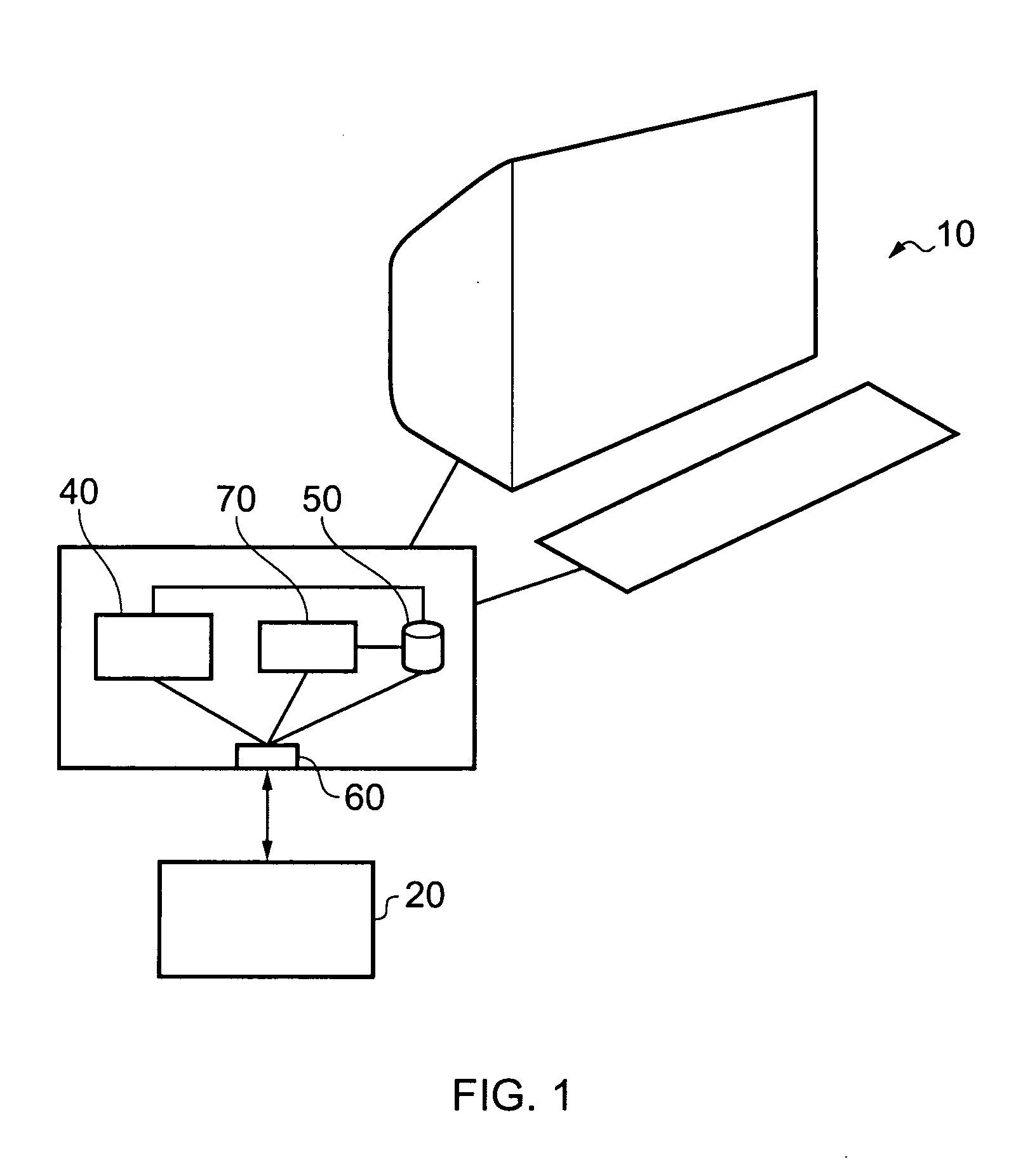[0009]The present invention recognises that when a computer program is compiled to produce an intermediate version or representation of the code, the ordering of at least some of the code is changed. Where the computer
program code contains trace operations, then these trace operations may also be moved within the code and this may change their effectiveness. The present invention recognises that analysis of this intermediate version of the code enables redundancy in the trace operations, which is possibly due to the reorganisation of the code, to be identified and where appropriate removed. Thus, following the analysis certain identified trace operations are replaced by modified trace operations, for example trace operations that generate redundant data may be removed or merged with other trace operations. Analysis of the code and modifying the trace operations at this stage can result in a reduction in the number of trace operations within the code, making it more similar to uninstrumented code without any trace operations, it may also reduce the amount of trace operations that need to be processed thereby reducing
processing overheads of the target
system, and it may reduce the amount of redundant data generated reducing the bandwidth required for outputting trace data. The present invention also recognises that modification of the trace operations may make them incomprehensible to a
system analysing the trace data and thus, it generates translation data indicating how the trace operations have been modified. This translation data allows the trace data output by the modified trace operations to be related to the trace operations that they replaced and thus, the modified code outputs trace data that can be understood by the use of the translation data. Thus, the present invention allows trace operations to be modified at the
compiler stage enabling the more efficient generation and output of trace data.
[0011]When analysing how to modify the trace operations, embodiments of this invention seek to reduce the cost of execution of the trace operation and thereby improve the efficiency of the trace when it is performed. By modifying the trace operations at
compiler stage not only can less trace data be generated but the number of trace operations can be reduced which can reduce
processing power, energy used and
execution time. Thus, the present invention seeks to reduce costs associated with the trace, these costs may include the amount of trace data generated, the number of trace operations performed, the
execution time and the power and energy required to generate the trace.
[0013]Although a modified trace operation may replace a single original trace operation, the modified trace operation perhaps generating less trace data, in some embodiments a modified trace operation is generated by merging several trace operations. Thus, two trace operations may be replaced by a single modified trace operation, or a plurality of trace operations may be replaced by fewer modified trace operations. This reduces the number of trace operations that are performed and may also reduce the amount of trace data output if some of the several trace operations replaced output the same data.
[0021]The modified trace operations replace other trace operations in order to reduce the cost of execution of the trace operations, and this may be by outputting less data than was output by the original trace operations. Analysis of the code at the intermediate version stage may identify that some of the data output is redundant data, that is data that is the same as data already output or data that can be calculated from data already output. If this is the case, then this data does not need to be output provided the translation data generated enables it to be derived from the data that is output.
[0023]Another cost that can be reduced is the cost due to
processing steps and the modified trace operation might be such that it requires a computer to perform fewer processing steps than the trace operation(s) that it replaced. For example, a trace operation may require a product of two variables to be output, which means the target system will need to calculate this value. If processing power on the target system is at a premium, it may be advantageous to output the two values individually and calculate the product on the system analysing the trace data.
[0030]In some embodiments said method comprises the further two steps of: following said step of replacing said at least some trace operations with modified trace operations, analysing said modified code; replacing at least some of said trace operations or modified trace operations with modified trace operations; and repeating said two steps until said step of analysing said modified code indicates said modified code not to reduce significantly a cost of execution of said trace operations when compared with previously modified code.
 Login to View More
Login to View More  Login to View More
Login to View More 


